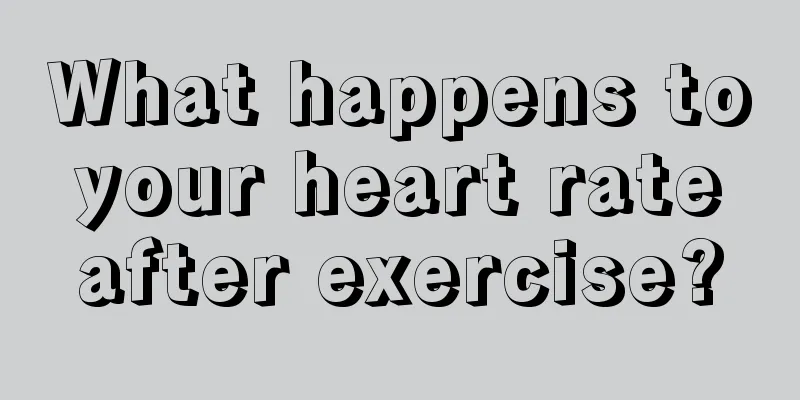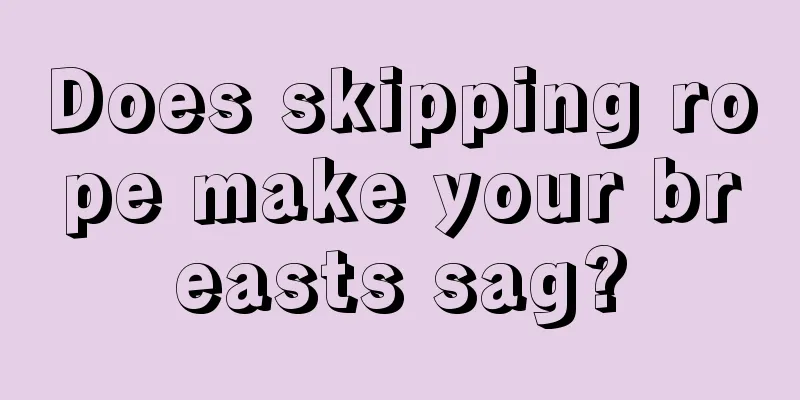What happens to your heart rate after exercise?

|
After exercise, your heart rate will definitely change, which can help you achieve the effect of exercise. However, you should not ignore some common sense about the changes in heart rate after exercise. So now let me analyze and introduce to you, what changes will occur in heart rate after exercise? In this way, we can know what kind of exercise is more suitable for us and more beneficial to our health. Just like other organs in the human body, the cardiovascular system can only be improved under the stimulation of a certain exercise intensity, but this intensity cannot be too high, otherwise it will become anaerobic metabolic exercise. This heart rate range is called the "effective heart rate zone". After mastering the effective heart rate zone, you can control the amount and intensity of exercise when doing different sports. First, remember your pulse rate when you are at rest. You can feel your heartbeat on your neck (above the clavicle), wrist, or directly on your chest. Then count for 15 seconds and multiply by 4. This way you will know your heart rate when you are at rest. The second step is to determine the maximum heart rate according to age. Generally speaking, the younger the age, the higher the heart rate. The calculation formula is: Men's maximum heart rate = 205-age. Women's maximum heart rate = 220-age. Internationally, the maximum heart rate is generally calculated by dividing the value by 220 - age. Third, determine the effective heart rate range during exercise. For ordinary exercisers, 60%~85% of the maximum heart rate is a suitable and effective exercise heart rate range. Whether it is aerobic exercise or anaerobic exercise. Only by having a suitable heart rate can you achieve better exercise results. The commonly used formula is (maximum heart rate - heart rate before exercise) / 2 + heart rate before exercise. This formula can reflect the individual heart rate of different genders and ages. This formula applies to aerobic and anaerobic exercise. Although aerobic and anaerobic exercise are different forms of exercise, they can both increase the heart rate during exercise. For example, in interval training involving sports such as swimming, the heart rate is generally controlled within the optimal range of 120-150 beats/minute. Generally, the heart rate of students during morning exercise and running is controlled at 130-150 beats per minute. For adults, the intensity of exercise can be controlled by 170-age. So, whether you are doing aerobic exercise or anaerobic exercise, you can use that formula to know your optimal heart rate when exercising. In daily life, if we can pay more attention to the knowledge and understanding of these sports common sense, it will naturally have a good effect on our physical health. Especially during exercise, if we do not have enough understanding of the sports common sense that suits us, it is easy to get injured during exercise. |
<<: Introduction to Exercise Intensity Index
>>: Can I exercise if I have myocarditis?
Recommend
What are the benefits of spinning bikes?
Spinning bikes are now very good exercise tools. ...
What are the precautions for winter sports?
The operation mode is different in different seas...
Is it good to run in the morning?
People who are in good health often have very goo...
How to exercise the levator ani muscles
Many people usually do some levator ani exercises...
What kind of exercise should I do to lose weight after giving birth?
During pregnancy, many women will accumulate more...
What is the best way for men to exercise?
Faced with the sudden emergence of young and hand...
Can jogging help you lose weight?
There are many fat girls and guys who are always ...
Practicing this exercise can actually make women no longer loose
As your skin ages, it will become increasingly lo...
What are your daily fitness exercises?
In order to maintain our health in our daily live...
Who says losing weight in winter is useless? Triathlon in winter doubles its effect
Sports experts recommend that exercise programs s...
What can skipping rope do?
Skipping rope is a very good way of exercise. Amo...
Can I lose weight by jogging for an hour every day?
Jogging is actually a very simple sport. With the...
What fitness equipment is included?
People cherish their physical health very much, s...
How much time do you need to run to be effective?
Although exercise to lose weight has become a fas...
How to do 7-day fast-acting yoga for weight loss
With the continuous improvement of living standar...









